Chicken Schnitzel
This post may contain affiliate links. Read my full disclosure policy.
Golden and crispy outside, tender and juicy inside—chicken schnitzel is a weeknight favorite for kids and adults alike.
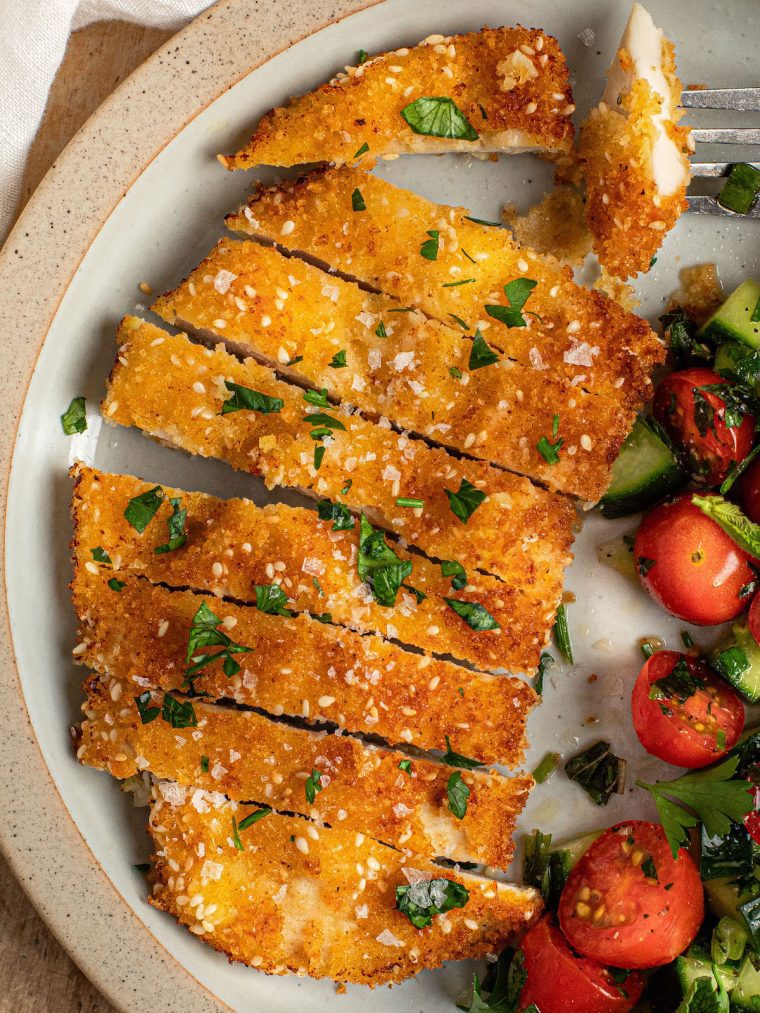
A few months back, my 20-year-old son, Zach, came home from his summer internship in Israel with a thoughtful gift: a collection of popular Israeli cookbooks. (He certainly knows his mama!) Each book had its own take on chicken schnitzel. While schnitzel originally hails from Austria, it’s popular in many parts of the world, especially Israel. This crispy, breaded chicken is a regular at family dinners and a fixture on restaurant menus. And thanks to its irresistible crunch, it’s a surefire hit with kids. Just as many American kids clamor for chicken fingers, Israeli children typically love schnitzel.
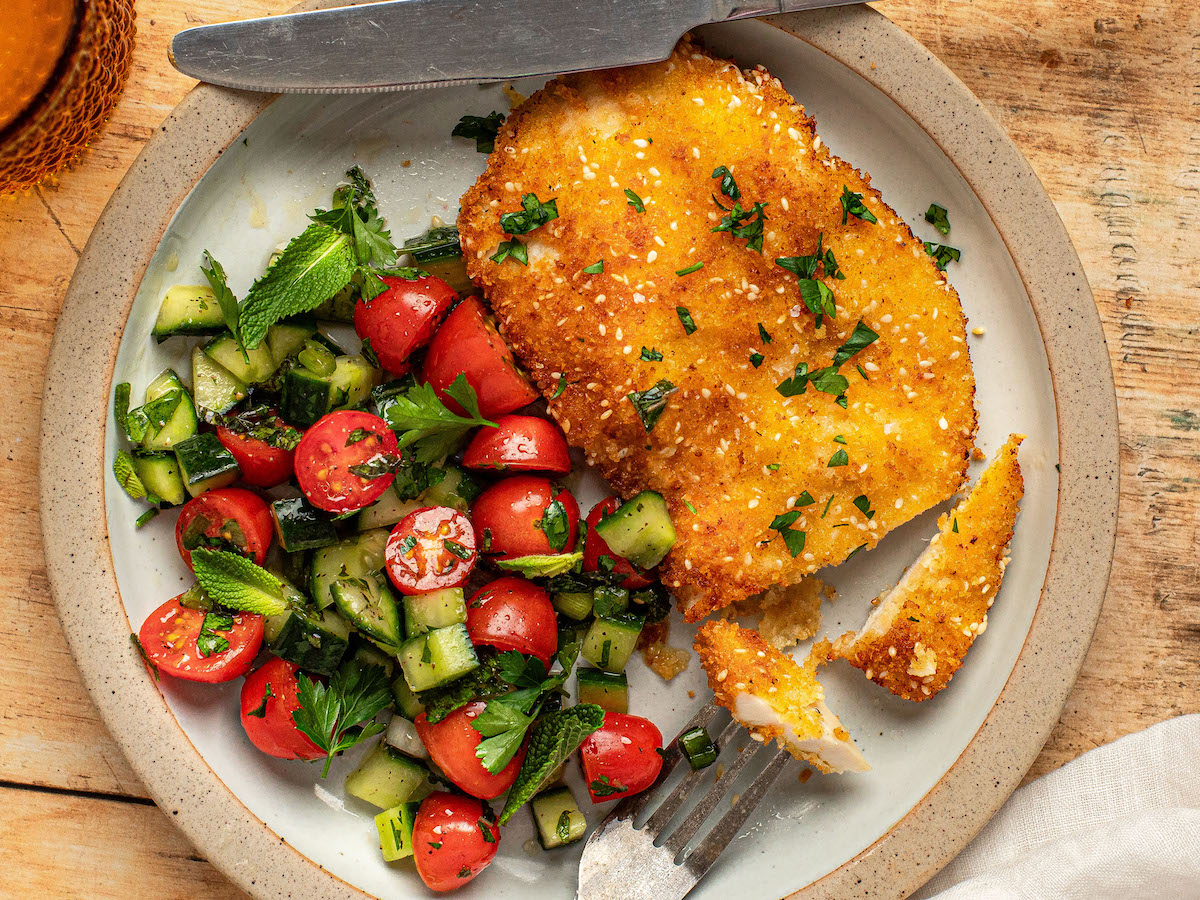
The secret to making the best schnitzel, in my opinion, is to quick-brine the chicken. By soaking the chicken fillets in a saltwater bath for just 30 minutes before breading, you ensure they come out flavorful and irresistibly juicy. Borrowing a page from my Israeli cookbooks, I include sesame seeds in the breading for a delightful nutty touch and boost the overall flavor with garlic powder and paprika. As for sides? Schnitzel pairs beautifully with a vibrant, crisp salad—think Israeli salad or Greek salad.
Table of Contents
“Delicious. Husband and kids loved it, even my picky toddler. I made it with the Greek salad on this site, which is also so good!”
What You’ll Need To Make Schnitzel
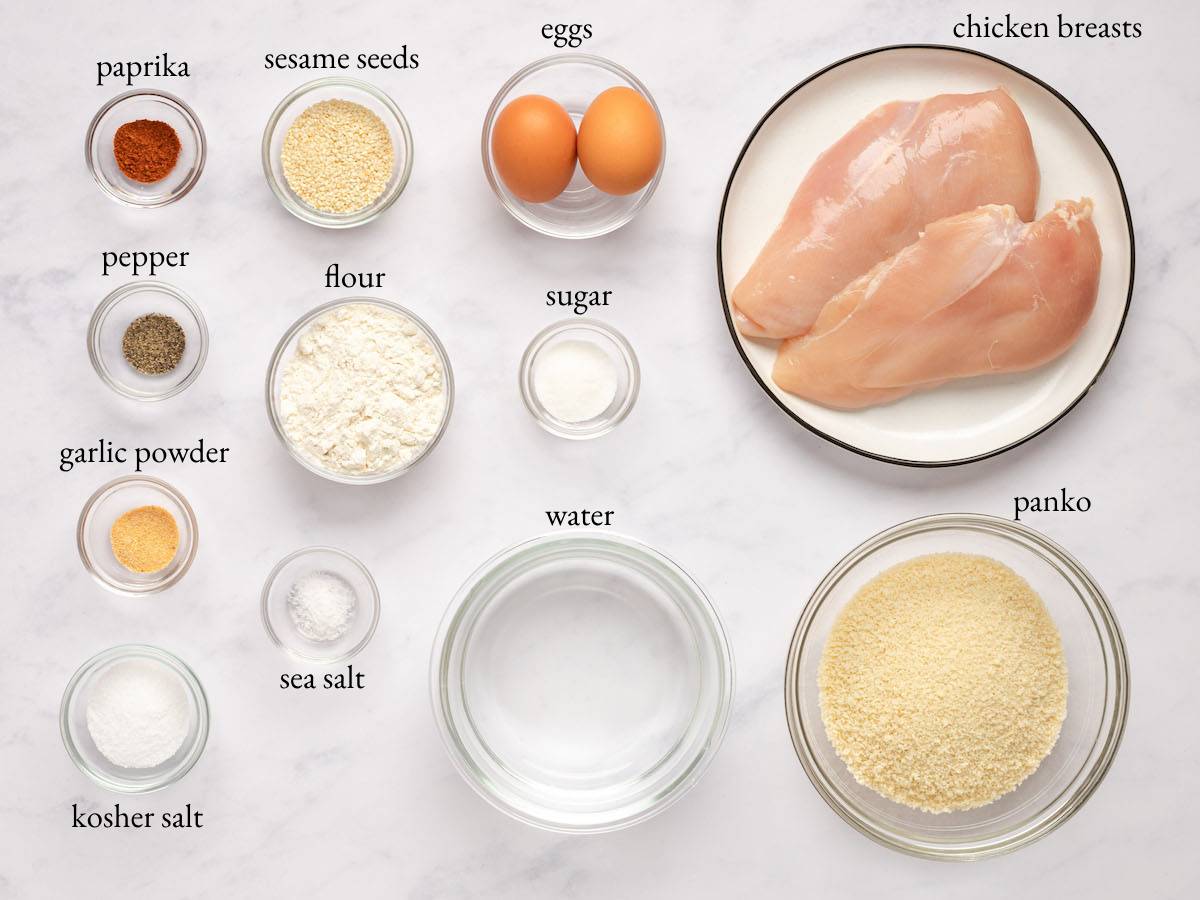
Before you delve into the recipe, a piece of advice: take the time to pound the chicken yourself. It’s tempting to opt for store-bought thin-cut breasts, but they are too thin and a poor choice for schnitzel; I explain this further in the FAQs below.
Step-by-Step Instructions
Slice the chicken breasts in half horizontally to form flat fillets.
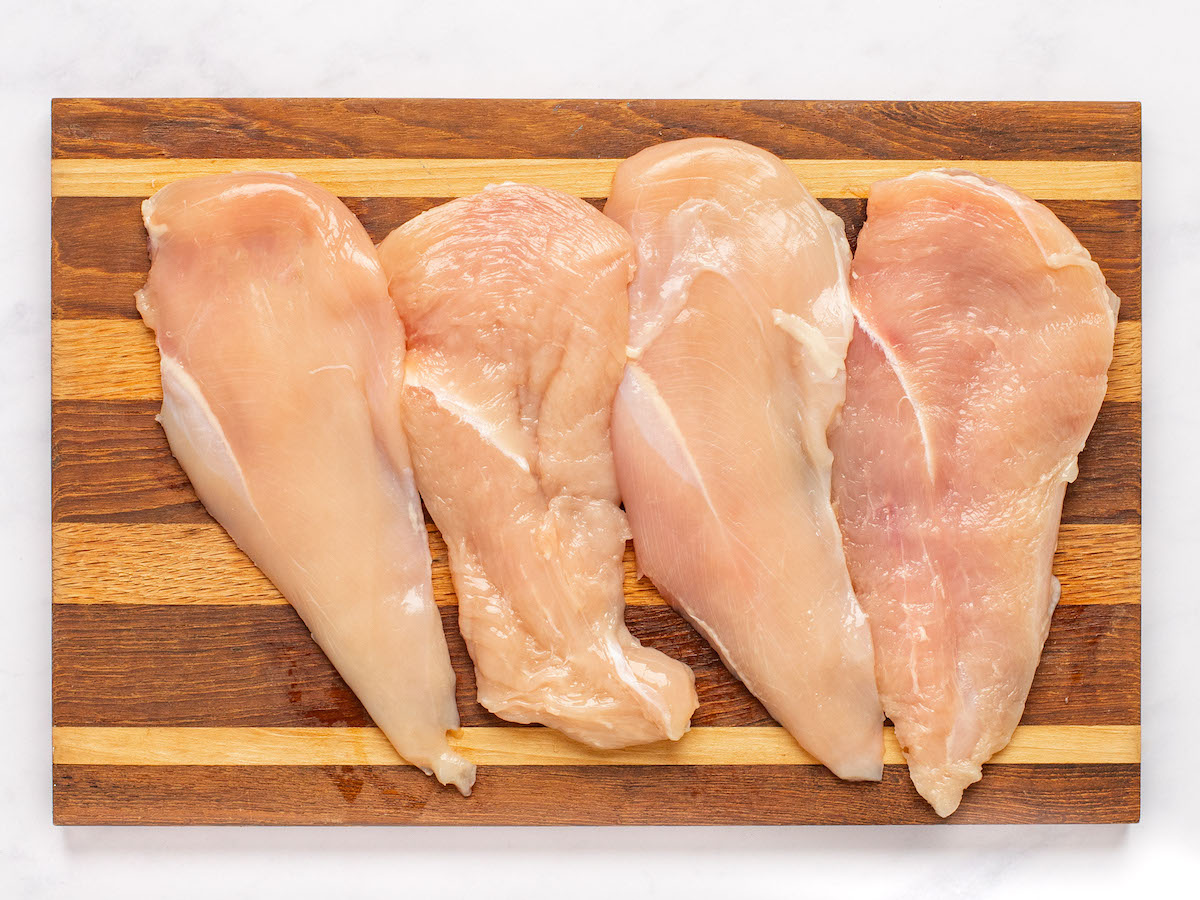
Place a fillet in a resealable freezer bag and use a meat mallet or rolling pin to pound to an even thickness between ⅛ and ¼ inch thick. Remove the pounded cutlet and set aside. Repeat with the remaining pieces of chicken.
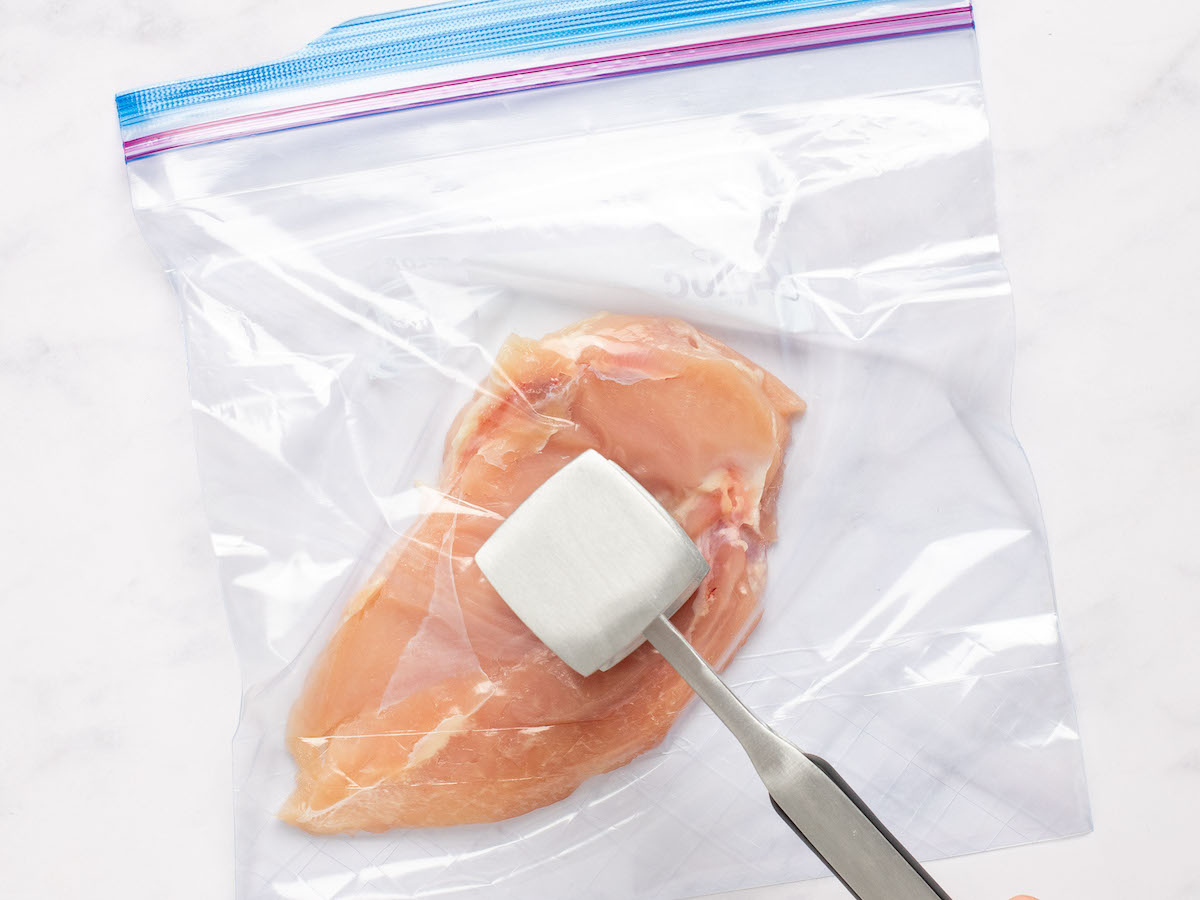
Make the brine: In a medium bowl, combine the water, kosher salt, and sugar. Stir until the salt and sugar are dissolved.
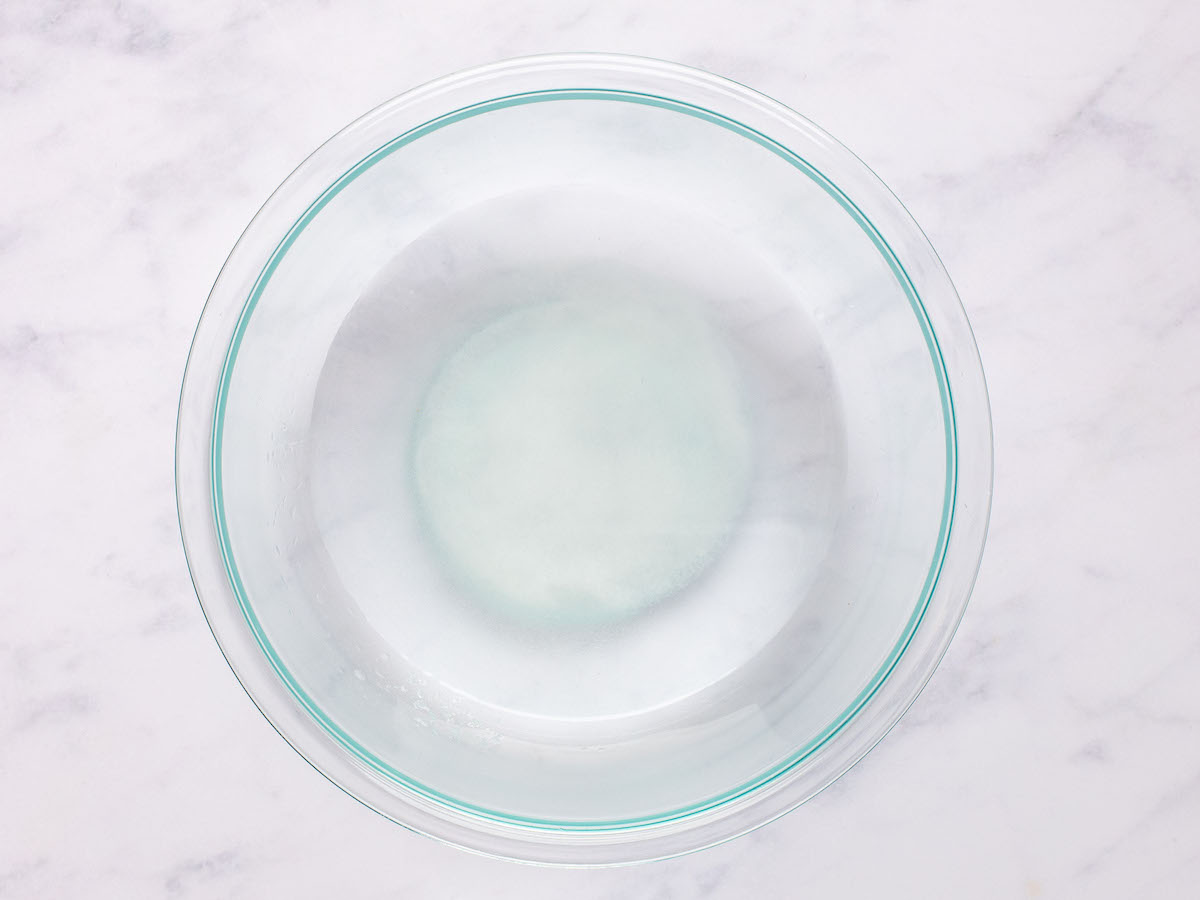
Add the pounded chicken to the brine and let sit for 30 to 45 minutes (no longer or the chicken may be too salty).
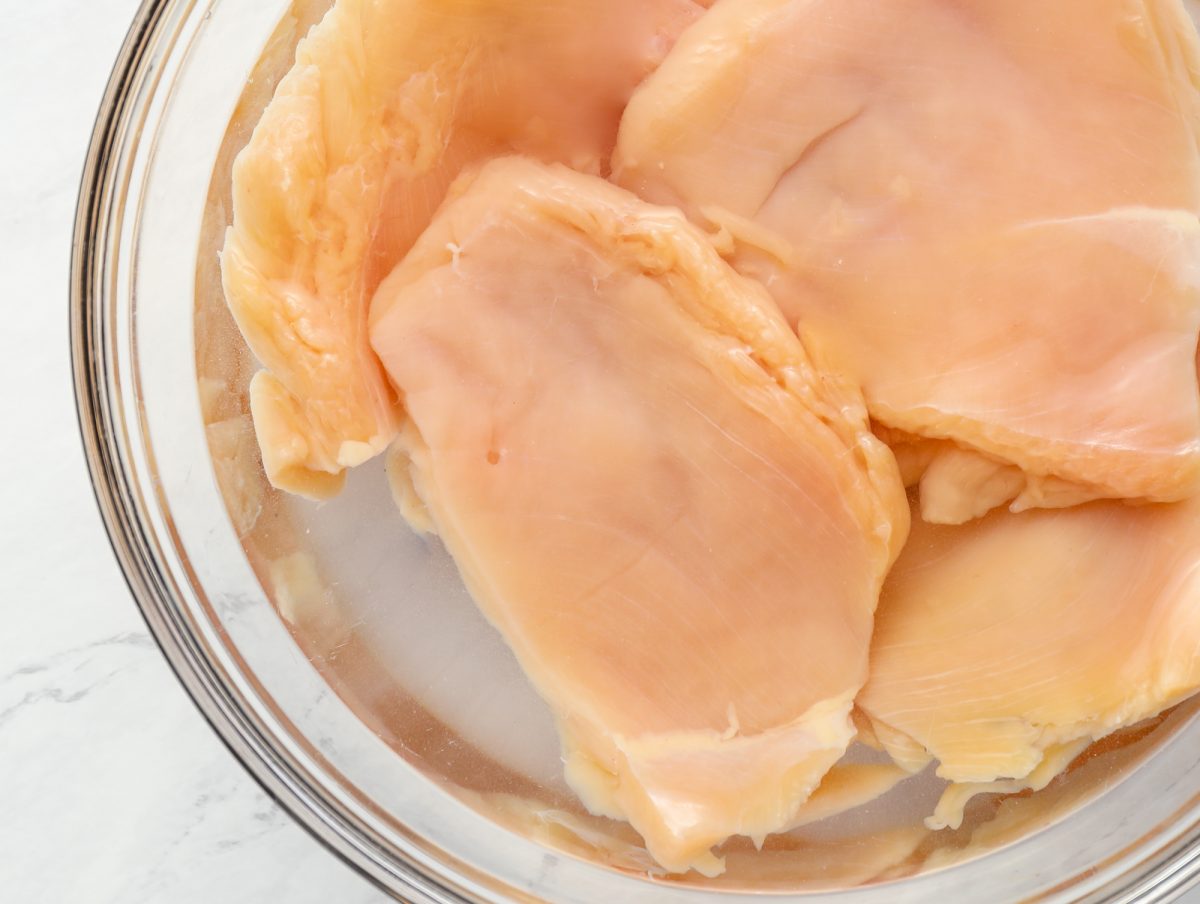
Remove the chicken from the brine and pat dry with paper towels.
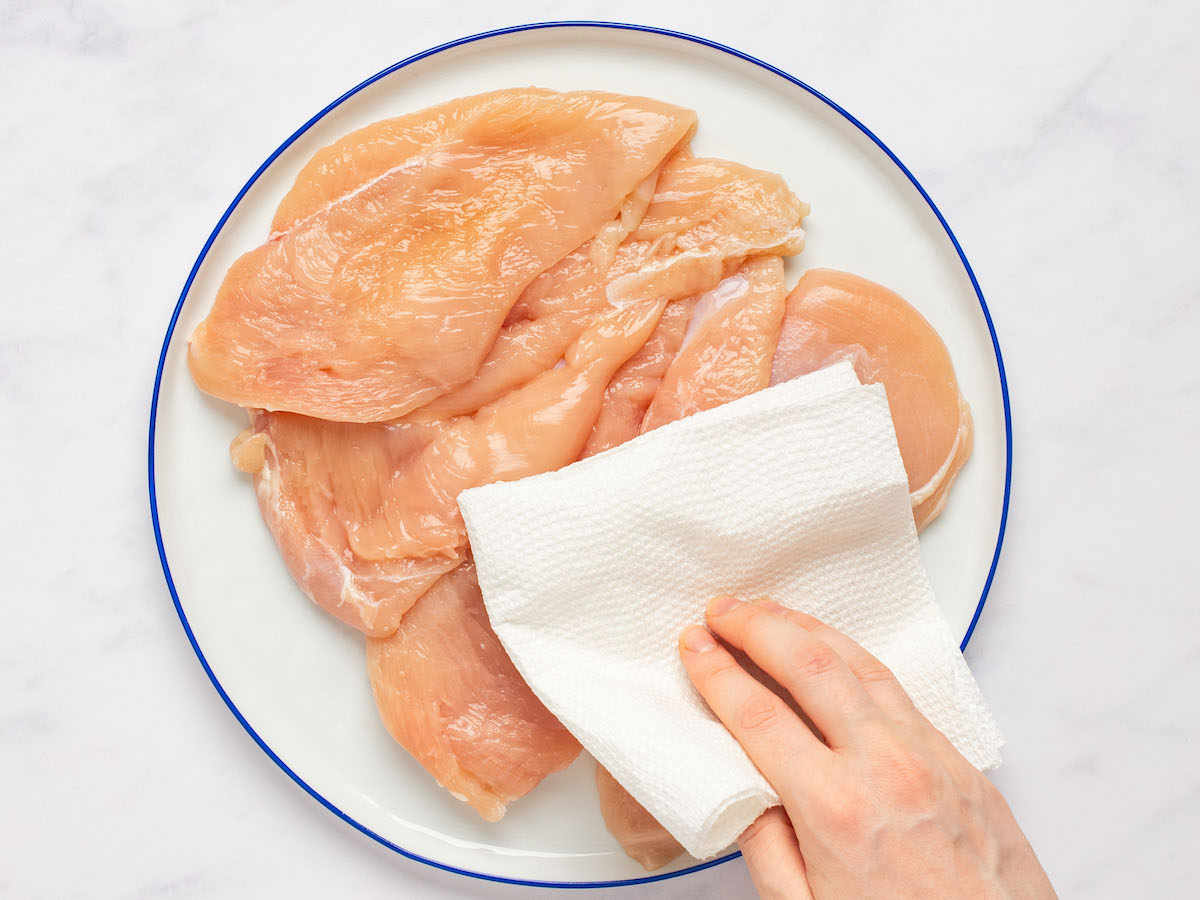
In a large shallow bowl, mix the panko, pepper, fine sea or table salt, garlic powder, paprika, and sesame seeds.
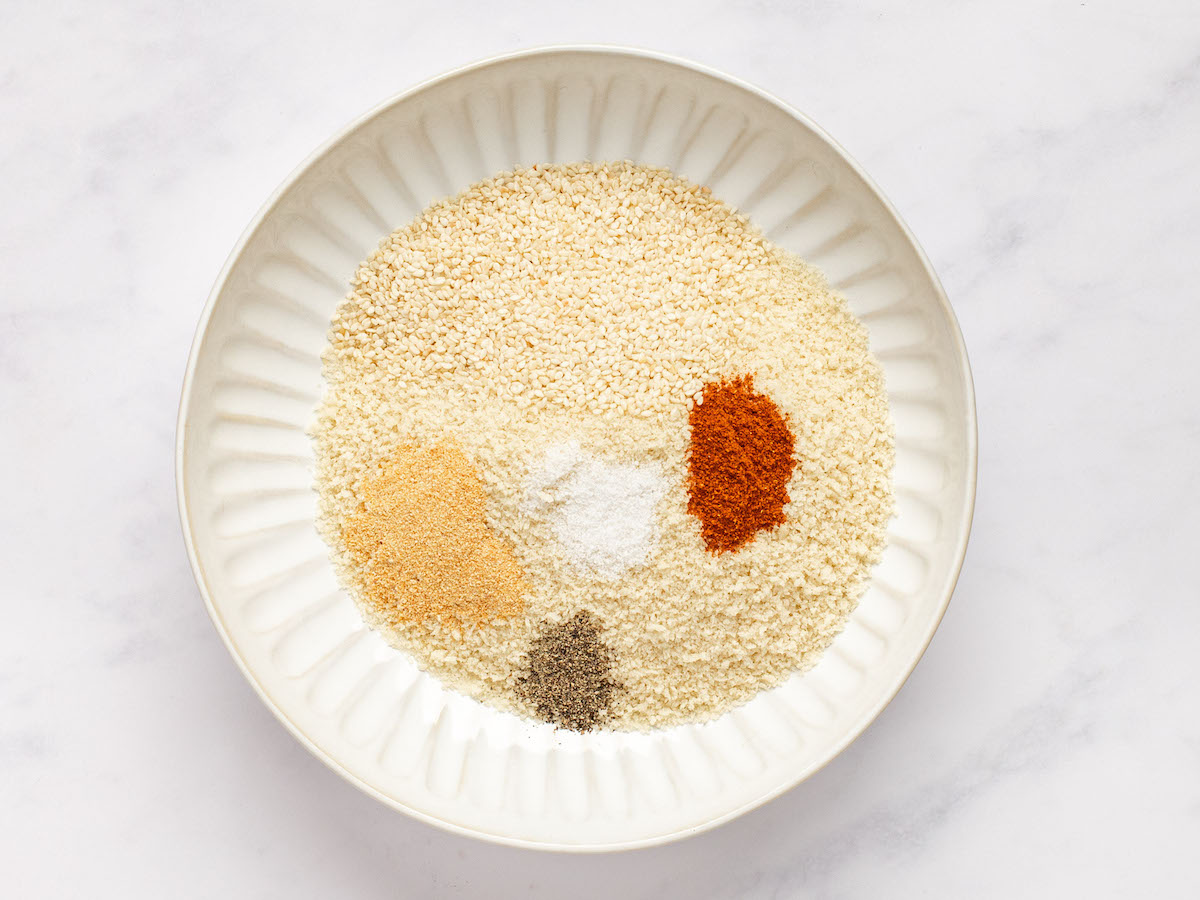
Place the flour in another shallow bowl. Beat the eggs in a third bowl. Set up a breading station in this order: flour, eggs, panko.
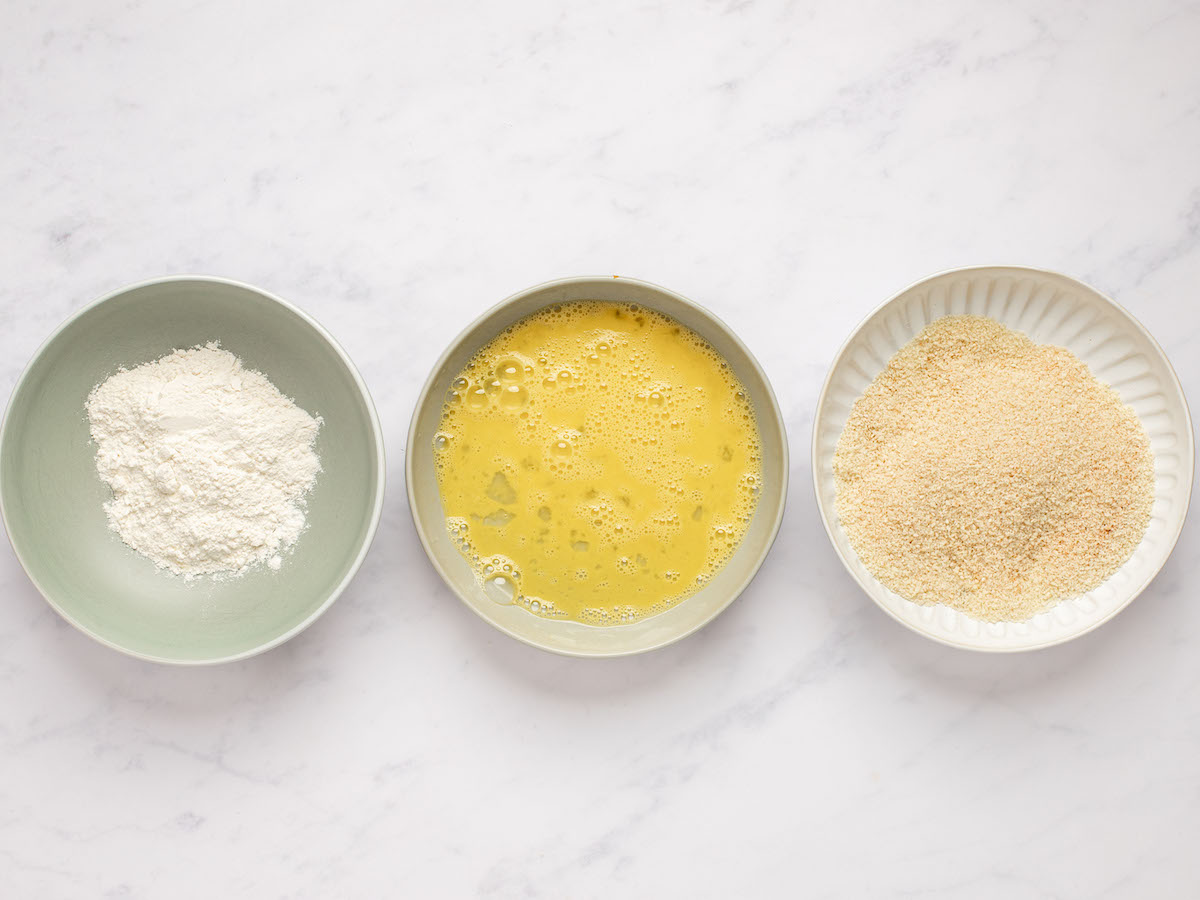
Dredge the chicken in the flour, coating evenly on both sides.
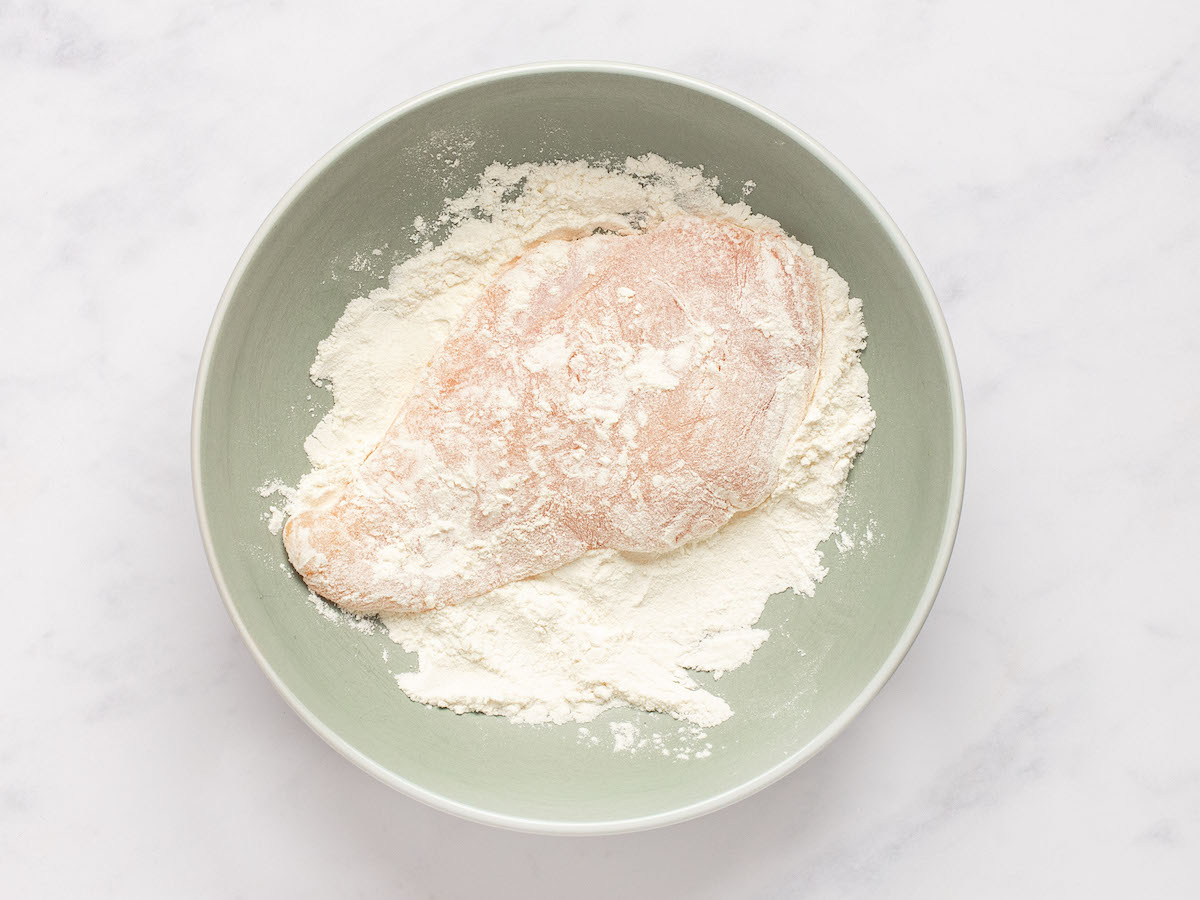
Dip in the eggs, letting any excess drip off.
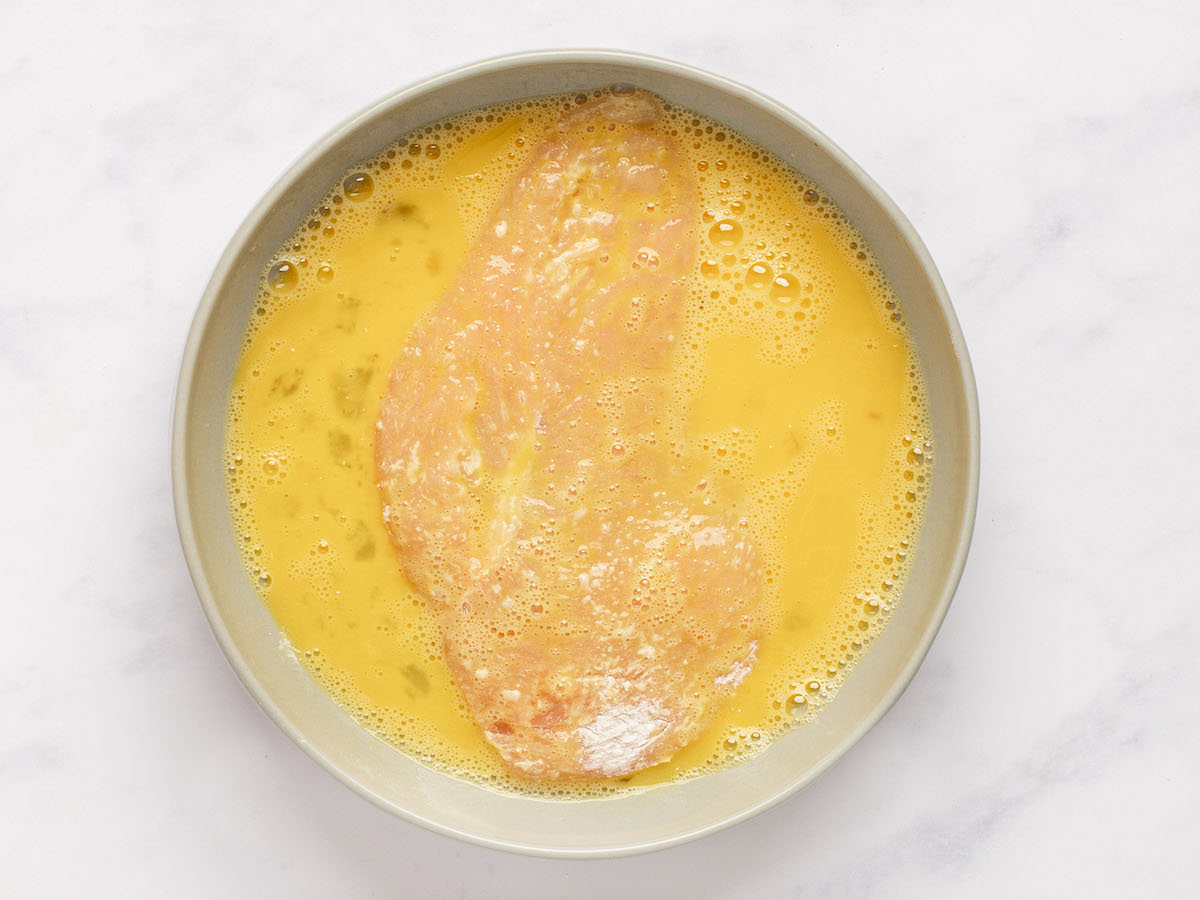
Dredge in the panko mixture, turning and patting to adhere. Place the breaded chicken on a plate.
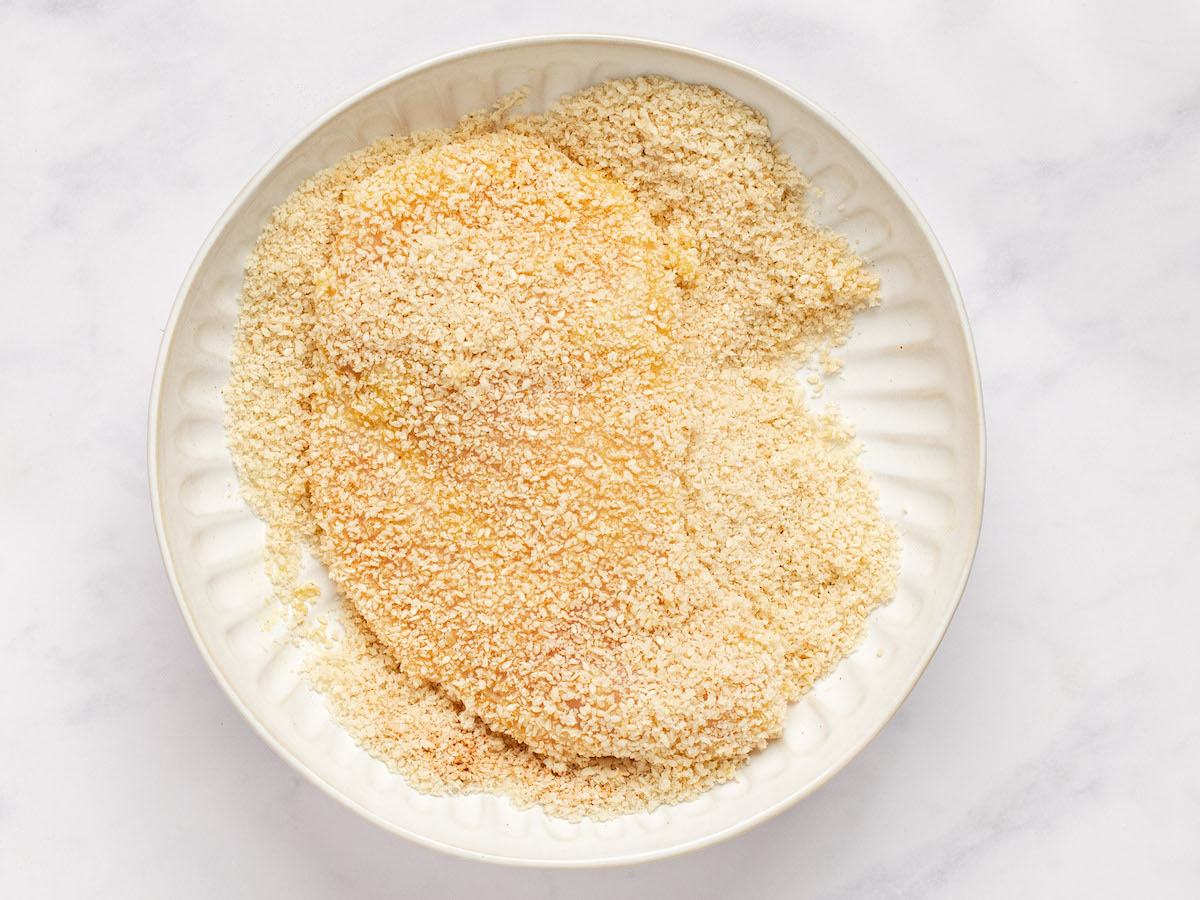
Repeat until all the chicken is breaded.
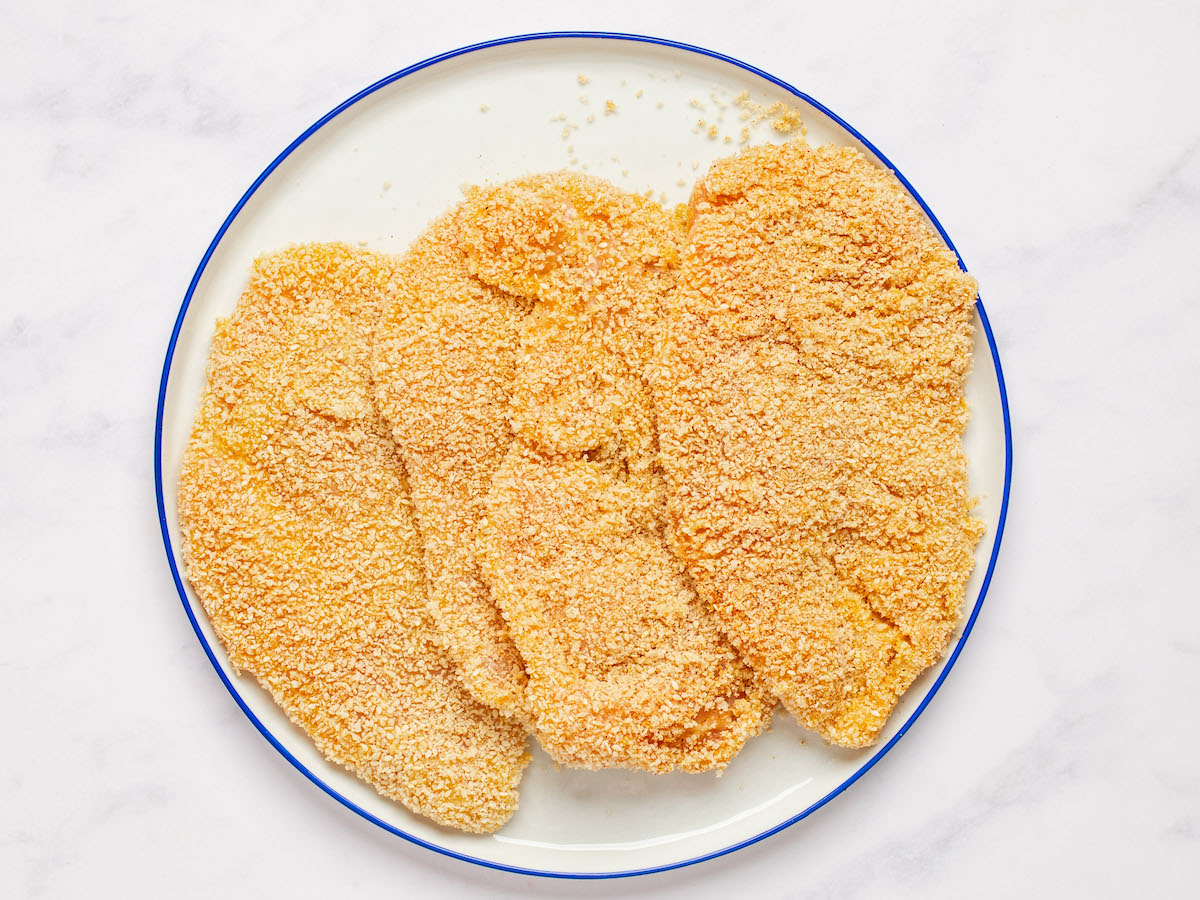
Line a 13 x 18-inch (33 x 46cm) baking sheet with paper towels. In a large nonstick skillet, heat about ⅛ inch of oil over medium heat until hot and shimmering. (You can test if the oil is ready by dropping a small cube of bread into it. If it sizzles upon contact and starts turning golden within a few seconds, the oil is ready.) Place two pieces of chicken in the pan, and cook until the first side is golden brown, 2 to 3 minutes.
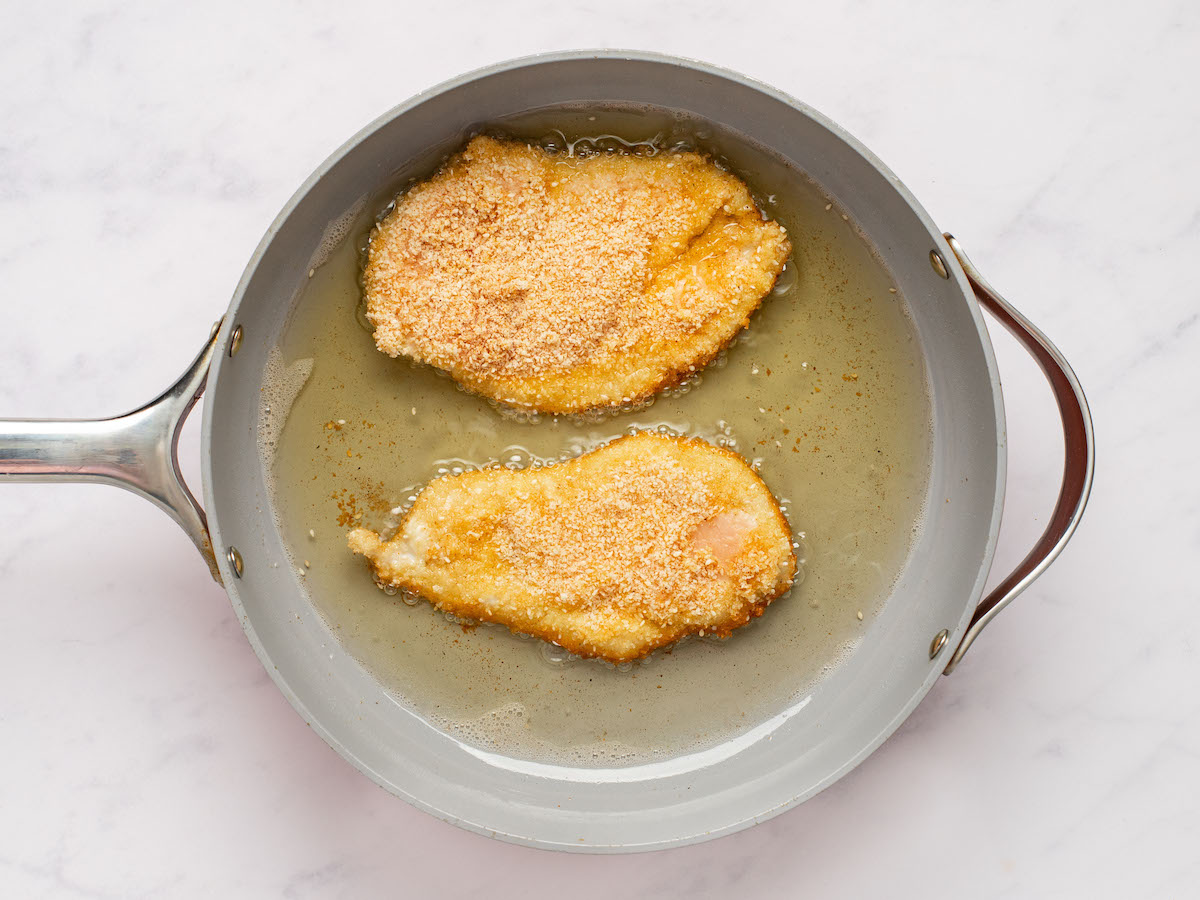
Carefully flip the chicken and cook for another 2 to 3 minutes, until golden and cooked through. (If the chicken is browning too slowly, increase the heat to medium high.)
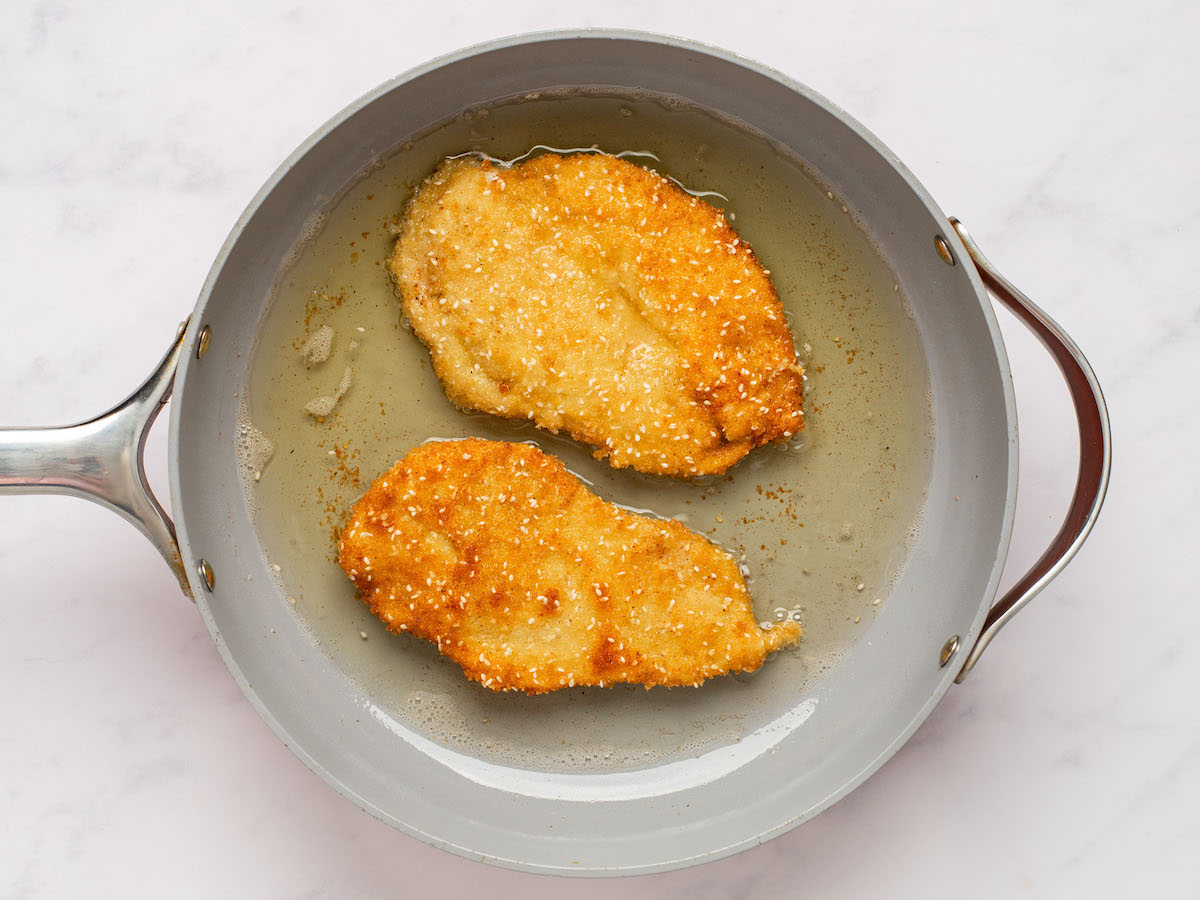
Place the cooked chicken on the prepared baking sheet. Cook the remaining chicken in the same manner (you shouldn’t need more oil).
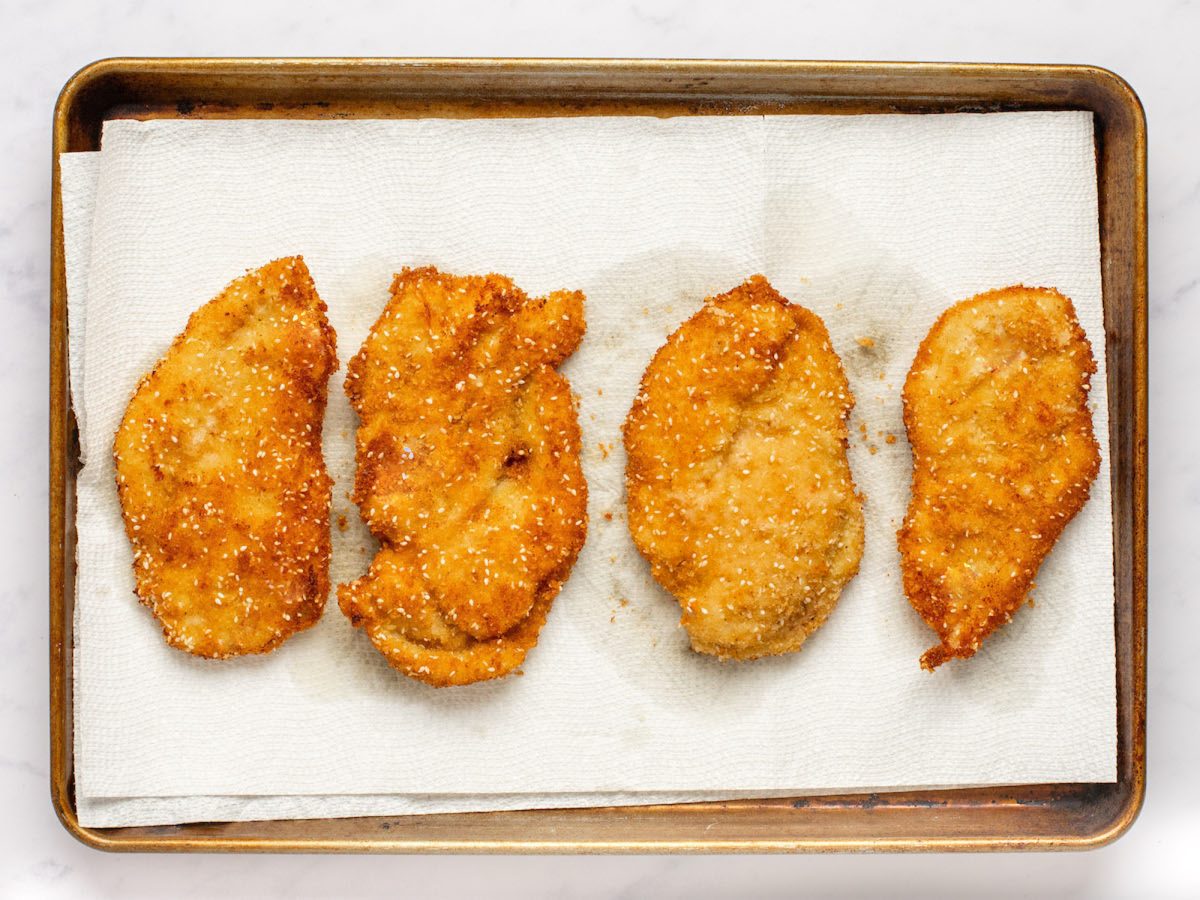
Transfer the chicken to a serving platter or individual plates. Serve with lemon wedges, if desired.
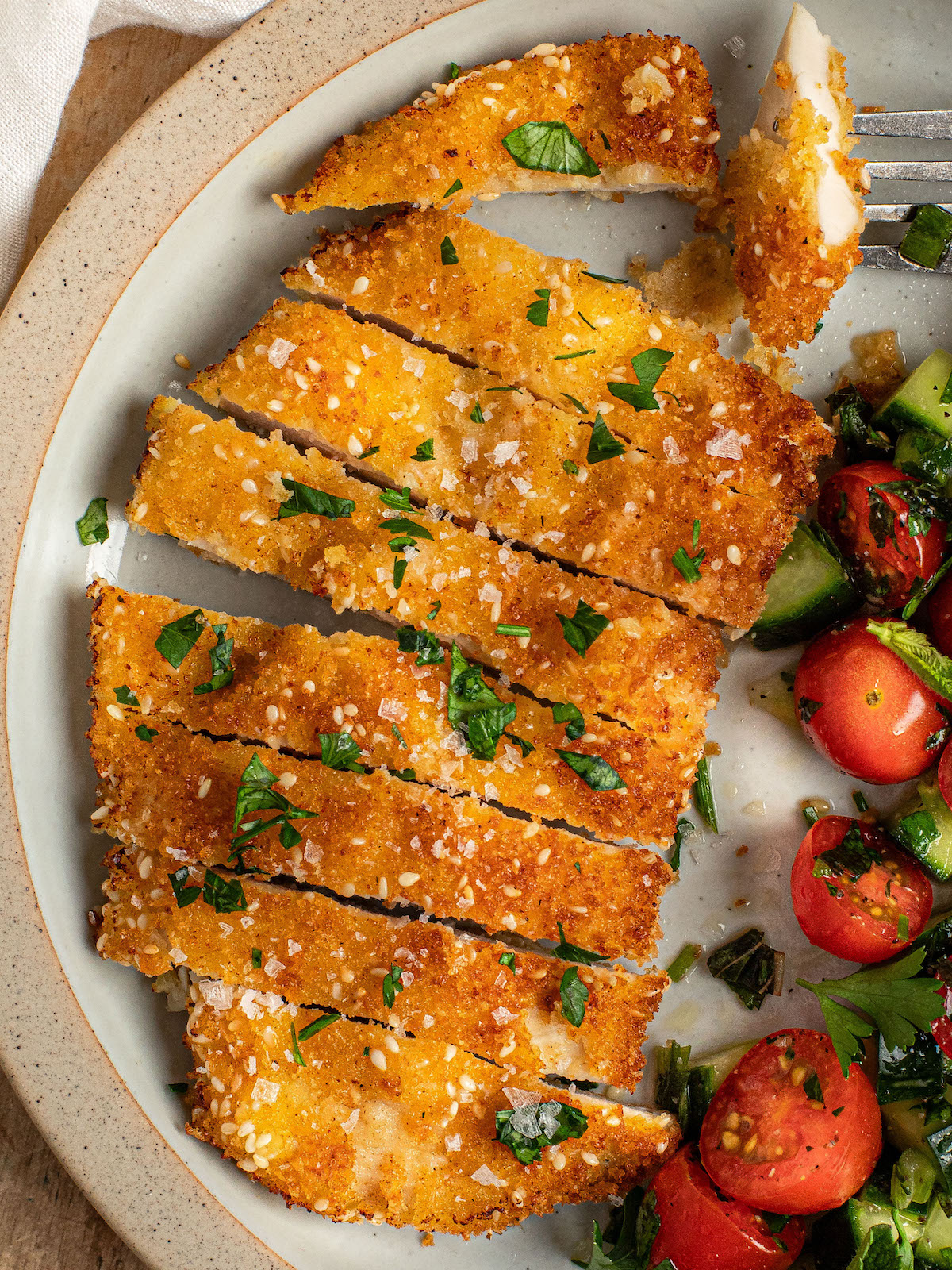
Frequently Asked Questions
Unfortunately, I don’t recommend it. Due to their thinness, these chicken breasts cook incredibly quickly. When pan-frying, the breading won’t have enough time to achieve that desirable golden brown color before the chicken is fully cooked. This will result in undercooked breading or overcooked (tough) chicken. Additionally, thinner cuts often result in an excessive amount of breading, which can overshadow the chicken itself. Finally, pounding the chicken not only tenderizes the meat by breaking down its fibers but also ensures a consistent thickness for uniform cooking.
For that classic crispy, golden exterior, pan-frying is the way to go. However, if you’re aiming for a lighter option, you can bake it. Place the breaded chicken on a foil-lined baking sheet lightly greased with olive oil. Bake at 400°F for 20 to 25 minutes, making sure to flip the chicken halfway through the baking process.
You May Also Like
Video Tutorial
Chicken Schnitzel
Golden and crispy outside, tender and juicy inside—chicken schnitzel is a weeknight favorite for kids and adults alike.
Ingredients
- 2 boneless, skinless chicken breasts (1 to 1.25 lbs) (see note)
- 2 cups water
- 2 tablespoons kosher salt
- 2 teaspoons sugar
- 1⅓ cups panko breadcrumbs
- ¼ teaspoon freshly ground black pepper
- ½ teaspoon fine sea salt (or table salt)
- ¾ teaspoon garlic powder
- ¾ teaspoon paprika
- 2 tablespoons sesame seeds
- ½ cup all-purpose flour
- 2 large eggs
- Vegetable oil, for cooking
- Lemon wedges, for serving (optional)
Instructions
- Slice the chicken breasts in half horizontally to form flat fillets. Place a fillet in a resealable freezer bag and use a meat mallet or rolling pin to pound to an even thickness between ⅛ and ¼-inch thick. Remove the pounded cutlet and set aside. Repeat with the remaining pieces of chicken.
- Make the brine: In a medium bowl, combine the water, kosher salt, and sugar. Stir until the salt and sugar are dissolved. Add the pounded chicken to the brine and let sit for 30 to 45 minutes (no longer or the chicken may be too salty). Remove the chicken from the brine and pat dry with paper towels.
- In a large shallow bowl, mix the panko, pepper, fine sea or table salt, garlic powder, paprika, and sesame seeds. Place the flour in another shallow bowl. Beat the eggs in a third bowl. Set up a breading station in this order: flour, eggs, panko.
- Dredge the chicken in the flour, coating evenly on both sides; dip in the eggs, letting any excess drip off; then dredge in the panko mixture, turning and patting to adhere. Place the breaded chicken on a plate and repeat until all the chicken is breaded.
- Line a 13 x 18-inch baking sheet with paper towels. In a large nonstick skillet, heat about ⅛ inch of oil over medium heat until hot and shimmering. Place two pieces of chicken in the pan, and cook until the first side is golden brown, 2 to 3 minutes. Carefully flip the chicken and cook for another 2 to 3 minutes, until golden and cooked through. (If the chicken is browning too slowly, increase the heat to medium high.) Place the cooked chicken on the prepared baking sheet. Cook the remaining chicken in the same manner (you shouldn’t need more oil). Transfer the chicken to a serving platter or individual plates. Serve with lemon wedges, if desired.
- Note: As tempting as it might be to use store-bought thin-cut chicken breasts for this recipe, pounding the chicken yourself offers numerous advantages. First, it both tenderizes the meat and ensures a consistent thickness for evenly cooked, juicy meat. Second, pounding achieves a more balanced breading-to-chicken ratio; with thin-cut breasts, you get the feeling of eating more breading than chicken. Finally, thin store-bought cuts cook too rapidly, risking undercooked breading or overcooked chicken.
- Pro Tip: When breading chicken, use one hand for the dry coatings and one hand for the wet. It’s much less messy this way.
- Note: Nutritional information was calculated assuming that approximately ¼ cup of the oil is absorbed into the chicken when frying.
Pair with
Nutrition Information
Powered by ![]()
- Per serving (4 servings)
- Calories: 494
- Fat: 23 g
- Saturated fat: 3 g
- Carbohydrates: 30 g
- Sugar: 3 g
- Fiber: 2 g
- Protein: 40 g
- Sodium: 796 mg
- Cholesterol: 196 mg
This website is written and produced for informational purposes only. I am not a certified nutritionist and the nutritional data on this site has not been evaluated or approved by a nutritionist or the Food and Drug Administration. Nutritional information is offered as a courtesy and should not be construed as a guarantee. The data is calculated through an online nutritional calculator, Edamam.com. Although I do my best to provide accurate nutritional information, these figures should be considered estimates only. Varying factors such as product types or brands purchased, natural fluctuations in fresh produce, and the way ingredients are processed change the effective nutritional information in any given recipe. Furthermore, different online calculators provide different results depending on their own nutrition fact sources and algorithms. To obtain the most accurate nutritional information in a given recipe, you should calculate the nutritional information with the actual ingredients used in your recipe, using your preferred nutrition calculator.

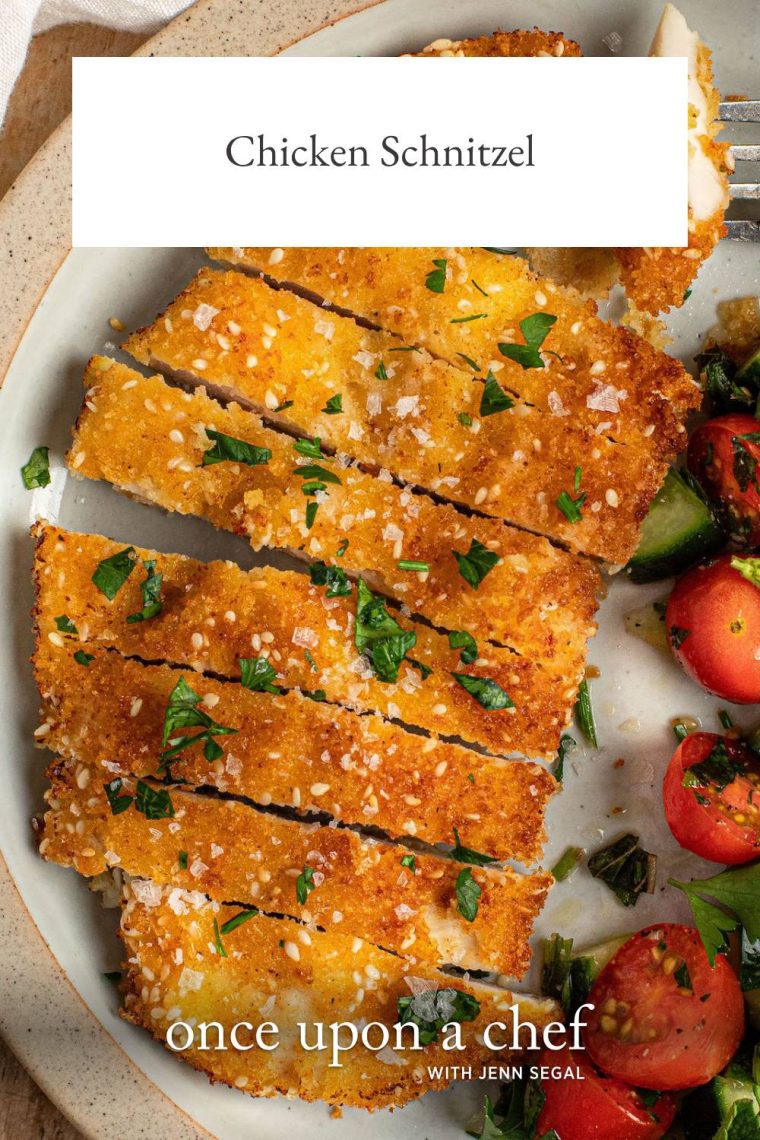
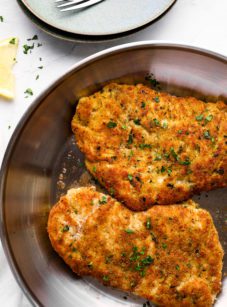

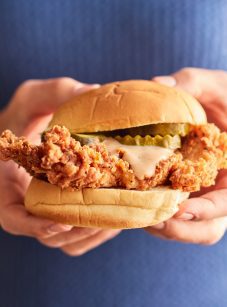
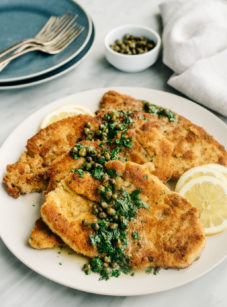
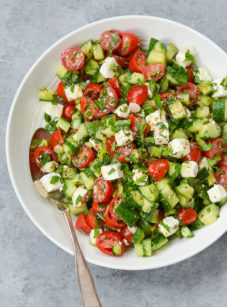
Jenn – I’ve made this recipe about 7 times, and 2 items- brining for longer than 20 minutes makes the chicken salty as does adding salt into the panko mix. so next time- I’m not adding any salt to the panko mix! Beyond that – comes out really good!
Brining the chicken is an interesting idea and can’t wait to try it. I make breaded cutlets all the time (same method as you) and I let them rest in the fridge prior to cooking. I find that the breading really adheres better and no issues later when frying. Thanks for the innovative cooking ideas!
I love your directions! You always take the time to clearly explain not only what to do, but why do it that way- as you explained why to tenderize the chicken and not try to buy the cutlets. It does make a difference. I have learned the hard way. 😉
Thank you for another wonderful recipe with delicious and complementary sides.
It turned out great. It was my first time making chicken schnitzel. They were a bit more tender than expected, but not in a bad way. 10/10
Generally successful. But too salty for me because of the brine and added salt in the panko mix, and I didn’t really enjoy the paprika. That didn’t taste like schnitzel to me; more like a kind of hungarian dish. I used a good quality chicken and wished it had more of a chance to contribute its flavor.
Excellent schnitzel! My whole family loved it. We had it with butter noodles and blackcurrant compote.
Thank you for sharing this delicious recipe, my husband enjoyed so much!
I followed the recipe exactly and must be doing something wrong. When pan frying the chicken, the breading coating gets burned but the internal temperature of the chicken is still too raw/not high enough. Not sure how to balance cooking to the right temperature for the meat but also not burning the coating. I did only one breast at a time – when I pounded them out, they were nearly the size of a frisbee : )
I ended up doing a light fry where the coating was perfectly colored and then put in the oven to finish the meat temperature. Too cumbersome. It was delicious though.
How can I fry (and not burn) but still meet the required internal temperature for the meat?
Hi Michele – sorry you struggled with these a bit! It sounds like you just need to turn down the heat; that will allow the chicken to cook through without burning the breading.
Really delicious chicken! Made the recipe exactly as described and am so glad I have leftovers for today! Thank you!!!!
Best chicken schnitzel recipe! Son requests it every week!